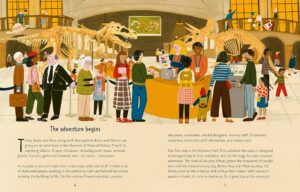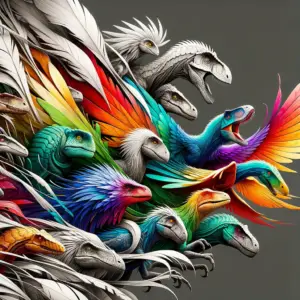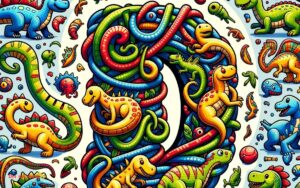Are Dinosaurs And Crocodiles Related?: Uncovering Links
Dinosaurs and crocodiles share a common ancestor. They are both part of the group known as Archosaurs.
Delving into the prehistoric lineage of modern animals can be fascinating, especially when it comes to understanding the relationships between species that seem worlds apart. Dinosaurs, the colossal rulers of the Mesozoic Era, have long since vanished, with their closest living relatives often considered to be birds.
Yet, crocodiles, their menacingly toothy cousins, still roam the earth’s rivers and estuaries. This connection may not be immediately apparent, but through the fossil record and genetic studies, scientists have been able to draw a line between these two distinct groups of reptiles. Unpacking this ancient family tree not only satisfies our curiosity about these awe-inspiring creatures but also helps us grasp the intricate evolutionary history of life on Earth.

The Dawn Of Reptiles
The history of reptiles stretches back to the age of the dinosaurs. During this era, remarkable creatures roamed the Earth, ruling the land, sea, and air. This period saw the emergence of two groups that interest us deeply.
Dinosaurs: Rise Of The Terrible Lizards
Dinosaurs dominated the planet over 200 million years ago. Powerful and diverse, these creatures evolved into numerous forms.
- Herbivores: Gentle giants feeding on plants.
- Carnivores: Fierce predators hunting for prey.
- Flight: Some even took to the skies.
Their existence marked a significant period called the Mesozoic Era. Scientists learn about dinosaurs from fossils. These remains tell the tales of their reign.
Crocodiles: Surviving Ancient Waters
Crocodiles have a long history dating back to the dinosaur age. These creatures adapted over time. They survived when the dinosaurs did not.
| Features | Importance |
|---|---|
| Thick skin | Protection |
| Strong jaws | Hunting |
| Sensitive eyes | Night vision |
Today’s crocodiles resemble their ancient ancestors. They present a window into prehistoric life.
Dinosaurs and crocodiles shared the Earth long ago. Both are part of the reptile family. But their paths in history diverged greatly. Dinosaurs vanished, yet crocodiles thrived. Their resilience is a tale of evolution’s unpredictable nature.
Tracing The Family Tree
Discovering the lineage of Earth’s ancient creatures can be as thrilling as reading a family saga. In ‘Tracing the Family Tree’, we explore the fascinating ties between dinosaurs and crocodiles. Did these behemoths share a backyard in the annals of prehistory? Let’s dig into the evidence that unveils their relationship.
Genetic And Fossil Records
To uncover the link, scientists sift through genetic markers and ancient remains. DNA analysis has become a time machine, transporting us back millions of years. Genetic clues are like breadcrumbs leading us to the truth. Fossils complement these findings, providing tangible proof of shared ancestry. Together, they weave a tapestry of evolution that is both intricate and revealing.
- DNA samples reveal common genes.
- Fossils show similar physical traits.
- Studies indicate a shared past.
The Archosaur Connection
The bridge that connects dinosaurs and crocodiles is known as the Archosaur group. This ensemble of ancient reptiles is the common thread in their family tree. Archaeologists and paleontologists pinpoint the evidence of this deep relationship through a variety of means.
- Archosaurs first emerged over 250 million years ago.
- Dinosaurs and crocodiles branched from this group.
- Their shared features include a four-chambered heart and similar egg types.
In essence, dinosaurs and their crocodilian cousins are bound by the tendrils of evolution. Tracing their lineage reveals a deep and abiding connection through the Archosaur ancestry. The genetic and fossil footprints they left behind tell a story of survival and divergence within the animal kingdom, one that continues to astound and enlighten us about the Earth’s biological legacy.
Comparative Anatomy
When we talk about dinosaurs and crocodiles, we uncover a story millions of years old. Comparative anatomy reveals the family secrets between these ancient creatures. Let’s explore the bone structures that hint at a deep-rooted connection and trace their unique paths through history. Ready to travel back in time?
Skeletal Similarities
Bones tell stories and dinosaur fossils alongside modern-day crocodiles have quite the tale. Both share similar spine structures and four-limbed body plans. Interested in unmistakable clues? Look at their scaly skin and egg-laying habits.
- Vertebrae: Both have sturdy backbones that supported their massive bodies.
- Sockets: Their legs attach to deep hip sockets, hinting at their kinship.
- Skulls: Notice the skull shapes – crocodiles’ resemble certain dinosaurs.
Evolutionary Divergence
Dinosaurs and crocodiles started from a common ancestor, but their paths diverged. Dinosaurs evolved into birds while crocodiles remained largely unchanged. This split is a fantastic evolutionary tale.
| Feature | Dinosaurs | Crocodiles |
|---|---|---|
| Time Period | 240 million years ago | 200 million years ago |
| Key Evolution | Became birds | Stayed similar |
Think of it as two branches of a family tree. Over millions of years, their forms adapted to different lives. This journey is a cornerstone of evolutionary biology.

Credit: www.ebay.com
Evolutionary Trajectories
Dinosaurs and crocodiles share a bond that extends far back in history. This connection tells a remarkable story of survival and change. The evolutionary trajectories of these creatures reveal a fascinating tapestry of life on Earth. So, let’s dive into understanding how these ancient reptiles adapted and evolved through the ages.
Adaptation To Changing Environments
In response to Earth’s ever-shifting landscapes, both dinosaurs and crocodiles had to be incredibly adaptable. Their survival hinged on this ability to change with their surroundings.
- Dinosaurs saw immense diversification, tailoring their bodies to various niches.
- Crocodiles honed their semi-aquatic lifestyles, becoming near-perfect predators.
Mass Extinctions: Different Fates
The curtain fell on the dinosaurs after a devastating asteroid impact, leading to their mass extinction.
Crocodiles, however, emerged resilient, their survival testimony to a robust design that weathered the ecological storm.
Modern Descendants
The past roars to life when we look at modern animals and their prehistoric relatives. Dinosaurs once walked the Earth, majestic and mysterious. However, not all their legacies vanished with their extinction. Certain modern creatures bear the torch of their dinosaur ancestry. Let’s dive into the world of these living representatives.
Crocodilians Today
Crocodiles, alligators, and their cousins are renowned survivors. They’ve endured for millions of years. Their ancestors shared the planet with dinosaurs. Crocodiles are not dinosaurs. But they are their distant relatives. Their design has changed little over time, a testament to its success.
- Long snouts and powerful tails characterize them.
- Powerful jaws snap shut on prey.
- Sturdy armor protects against attacks.
Birds: The Living Dinosaurs
Birds sing a tale of ancient times. These feathered creatures are dinosaurs’ direct descendants. The connection explains many similarities. Observe a bird’s claws and beak. Imagine a dinosaur. The resemblance is uncanny. Birds are, in essence, modern dinosaurs.
| Dinosaur Trait | Bird Trait |
|---|---|
| Scales | Feathers |
| Laying Eggs | Laying Eggs |
| Hollow Bones | Hollow Bones |
From the majestic eagle to the humble sparrow, all birds carry dinosaur DNA. They are the most visible link to our planet’s monumental past. Witnessing them in flight is observing a page from the Earth’s history.
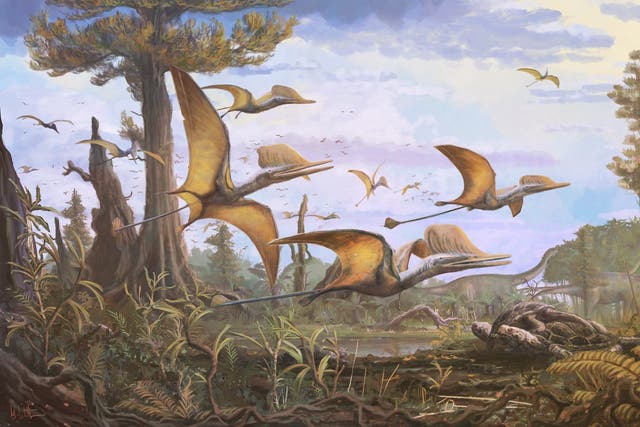
Credit: www.independent.co.uk
Scientific Revelations
Scientific revelations never cease to amaze when it comes to Earth’s ancient residents.
Let’s look closer at surprising connections between dinosaurs and crocodiles.
New Discoveries
Recent fossil studies shed light on these ancient creatures.
- Data points to a shared ancestor
- Crocodiles are not direct descendants of dinosaurs
- Both belong to the group called Archosaurs
These findings help scientists understand the evolution of reptiles.
Reassessing Theories And Relations
Previous beliefs are now challenged.
| Old Theory | New Insight |
|---|---|
| Dinosaurs gave rise to crocodiles | Shared common ancestor but separate paths |
| Crocodiles changed little since dinosaur era | Crocodiles evolved and adapted uniquely over time |
Evolutionary biology uncovers truths about their lineage and survival.
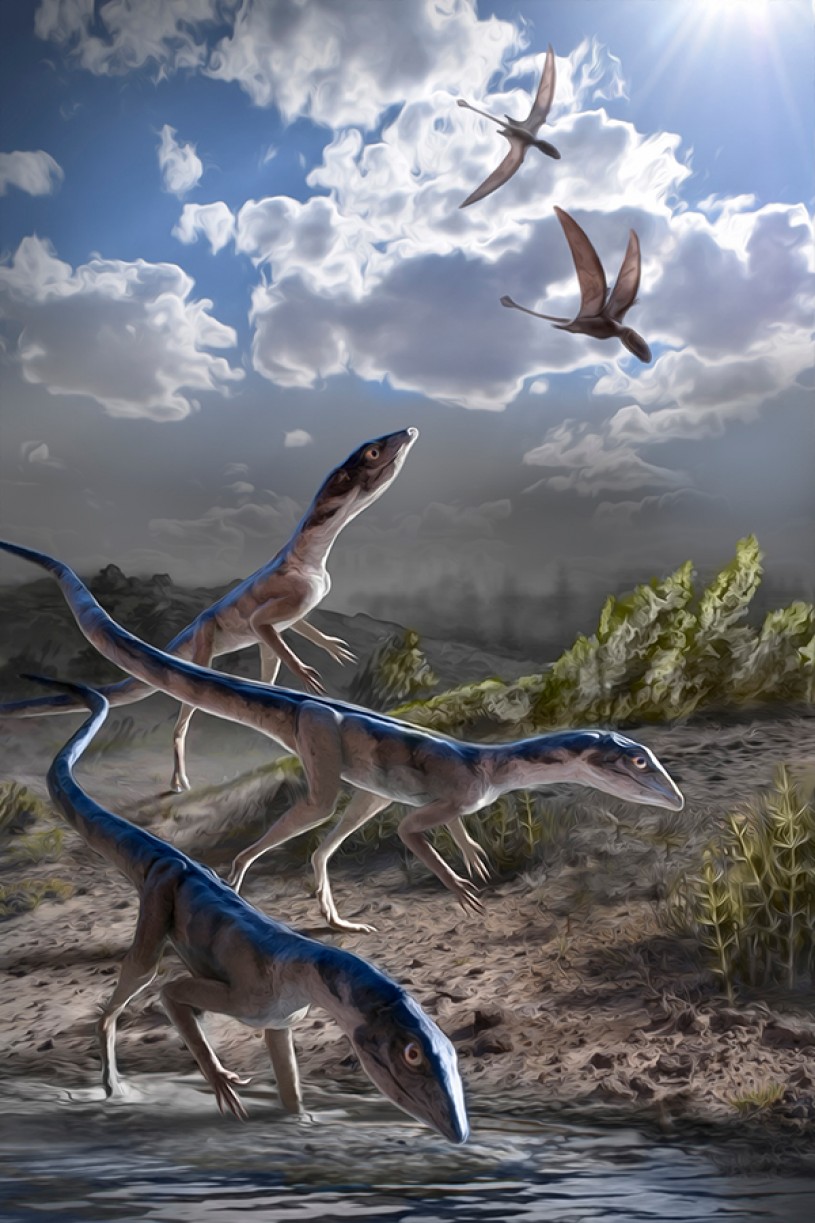
Credit: nhm.org
Frequently Asked Questions For Are Dinosaurs And Crocodiles Related
What Dinosaur Is Closely Related To Crocodiles?
Sarcosuchus, a prehistoric relative of crocodiles, shared a common ancestor with dinosaurs. This massive crocodyliform lived alongside dinosaurs during the Cretaceous period.
Is A Crocodile A Dinosaur Yes Or No?
No, a crocodile is not a dinosaur. Crocodiles are reptiles that share a common ancestor with dinosaurs but are not dinosaurs themselves. They belong to a group called Crocodylomorpha.
What Is The Closest Relative To Dinosaurs?
Birds are the closest living relatives to dinosaurs, sharing a common ancestor from the theropod group of dinosaurs.
How Are Alligators Related To Dinosaurs?
Alligators share a common ancestor with dinosaurs, making them distant relatives. They belonged to a group called archosaurs during the Triassic period.
Conclusion
Exploring the ancestral paths of these magnificent creatures reveals fascinating connections. Dinosaurs and crocodiles share a common ancestor, uniting them in the reptilian family tree. As we journey through prehistoric timelines, it’s clear their evolutionary paths disclose a remarkable story of survival and adaptation.
By understanding these links, we gain insight into the incredible diversity of life that has graced our planet.

